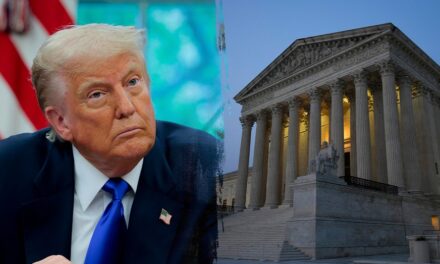In the ever-evolving landscape of American politics, every debate holds the potential to redefine perceptions, influence public opinion, and reshape the trajectory of campaigns. One notable instance that stands out in recent history was the post-debate interview conducted by seasoned political journalist George Stephanopoulos with President Joe Biden. This moment has been described as both poignant and revealing, prompting a deep dive into the emotional and psychological state of the President during a challenging phase of his administration.
In a new book that sheds light on the inner workings of the Biden administration and the critical moments that have defined his presidency, George Stephanopoulos recounts the impressions he formed during the post-debate interview. The title of the book hints at the gravity of the revelations contained within its pages, which detail not just the political but also the personal dimensions of Biden’s role as president.
Stephanopoulos, who has carved a significant niche as a political analyst and interviewer, described his experience with Biden as “heartbreaking up close.” This phrase encapsulates the emotional weight that he perceived in Biden during their exchange. The description signals not only an acknowledgment of Biden’s struggles but also a deeper understanding of the man behind the political persona—a leader navigating some of the most challenging waters of his career.
The debate in question took place at a pivotal moment, where the stakes were high for the Biden administration, coming amid various crises that ranged from domestic issues to international challenges. The backdrop of this interview was not merely a reflection of political performance but rather an exploration of the human emotions that govern decision-making processes in the highest office of the land.
Biden has faced numerous hurdles since his inauguration. The COVID-19 pandemic, economic instability, and social unrest are just a few of the formidable challenges that have colored his presidency. In this intense historical context, the post-debate interview served as a lens through which both Biden’s vulnerabilities and his resilience could be examined.
During the interview, Stephanopoulos delved into the emotions and motivations that drive Biden as he fulfills his role. The discussion touched on personal anecdotes of loss, resilience, and hope. Biden’s well-documented history of overcoming personal tragedies, including the loss of his son Beau Biden, adds layers to his character—a fact that Stephanopoulos elegantly highlighted in their conversation.
Critics have often described Biden as empathetic, and this moment further cemented that perception. By referring to the encounter as “heartbreaking,” Stephanopoulos hinted at the weight of leadership and the burden that accompanies it. This does not merely apply to Biden, but to any leader who grapples with their decisions under the glaring scrutiny of the public eye.
Moreover, the book references not just the exchange between the two political figures, but also forms a narrative about the changing dynamics of political communication in America. The audience witnesses an evolving trend—one where the personal and the political often intertwine more than ever. As sharp divisions persist in the nation, moments of vulnerability can sometimes serve to humanize leaders and create pathways to connections with constituents.
The author also reflects on how this interview resonates even beyond the immediate political implications. It calls into question the standards by which leaders are judged and how media portrayals impact public opinion. The portrayal of Biden as “heartbreaking” brings a nuanced perspective on not just his policies or political strategy but on his humanity and ability to lead in such tumultuous times.
This book doesn’t shy away from stark realities; rather, it embraces them and reflects on what they mean for the future of American democracy. By incorporating the personal with the political, it aids readers in understanding the complexities that define not only Biden’s leadership but that of any political figure navigating unprecedented times.
Stephanopoulos’ reflections further delve into the psychology of leadership under pressure. How do leaders process their grief, setbacks, and loss while making decisions that affect millions? Biden, often known for his emotional fortitude, exhibited a clear struggle in the aftermath of the debate. This moment exemplified how, in politics, the personal often bleeds into the public sphere, producing a resonance that challenges the conventional perceptions of political actors.
The courage to show vulnerability in leadership is often debated. Biden, through his actions and words during the interview, revealed a belief that connectiveness is essential in overcoming divisive political narratives. Acknowledging one’s struggles isn’t a sign of weakness but a strength that can foster solidarity and support among constituents.
As the book continues to circulate, the sentiment expressed by Stephanopoulos regarding Biden has spurred discussions not just among political analysts but also within the general public. How do voters relate to a leader who expresses such profound emotions? Will this lead to greater empathy towards his administration or result in further scrutiny? Within the domain of democratic engagement, such discussions are pivotal.
The implications of the interview discussed in the newly released book extend beyond Biden’s presidency. They reflect a broader conversation about what we expect from leaders—an expectation that continues to shift as the American public grapples with complex issues like healthcare, climate change, and social justice. The human side of leadership becomes ever more relevant as crises unfold and as leaders work to communicate effectively amidst uncertainty.
As these revelations unfold, they paint a vivid picture of a leader who, while grappling with immense pressures and personal losses, continues to strive for a unifying vision for the nation. The poignant nature of Stephanopoulos’ observations reminds readers that behind every political decision lies a human narrative filled with emotions, challenges, and resilience.
In conclusion, the characterization of Biden as “heartbreaking up close” serves as a sobering reminder of the weight carried by those in positions of power. It points to a critical intersection of politics and humanity that is often overlooked in the fast-paced world of political reporting. As citizens reflect on their expectations of leadership, the insights from this book provoke profound discussions about empathy, resilience, and what it truly means to lead. The dialogue ignited by this interview could very well influence the public’s perception as well as the broader political framework in the coming years.































